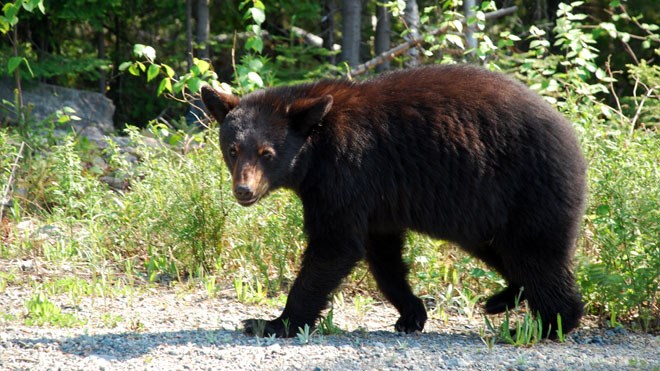The spring bear hunt returns today in Northern Ontario — albeit in a limited capacity — so we asked Canadian historian Mike Commito to provide NorthernLife.ca with a timeline history of the hunt, as well as some of the issues and criticisms stacked against it.
1937
Ontario introduces a non-resident spring bear hunting season. It’s hoped it will generate tourist revenue and increase hunting pressure.
1961
The provincial government affords black bears big-game status. Previously, bears were bountied from 1942-61. Now, they can only be legally hunted during open seasons in the spring and fall.
1990s
Criticism about the spring bear hunt, largely focused on baiting and cub orphaning, becomes vocal and organized. Various groups in the province campaign to get the hunt repealed.
1999
After years of concerted pressure, the government cancels the spring bear hunt on Jan. 15. Many in Northern Ontario complain the decision was politically motivated, citing the science did not a support a moratorium and that the Progressive Conservatives caved to ethical arguments.
2003
To address concerns the cancellation led to an increase in nuisance bear activity, the government commissions the Nuisance Bear Review Committee. It does not find a correlation between spring bear hunting and human-bear encounters. Rather, it advocates for a system focusing on education and awareness. This program, known as Bear Wise, was implemented in 2004 and was an important management tool until it was gutted in 2012.
2013
In November, the Ontario Ministry of Natural Resources announces that it is introducing a two-year spring bear hunt pilot project. It is limited to residents only and restricted to eight Wildlife Management Units in Northern Ontario. The government claims it will help reduce human-bear conflicts and address public safety concerns in the North. The problem is that it completely ignores the science and the ministry’s own findings in 2003, namely that spring hunting will not reduce human-bear conflicts. The primary driver behind these encounters is based on the availability of natural food sources, something that is difficult to forecast from year to year.
The Current Situation
This past January, the Ministry of Natural Resources and Forestry (MNRF) released preliminary data that placed the estimated number of bears harvested in the 2014 season at a paltry 193. While this number is not definitive, it is presumably not the results the MNRF hoped to see. The second phase begins today and runs until June 15.
Moving forward, the Liberals face the decision of shelving the spring bear hunt or reinstating it completely. In the short-term, initiatives like the pilot will not succeed because they fly in the face of scientific reasoning.
Reducing human-bear conflict cannot be readily solved by increased hunting pressure and we must recognize the human factors that exacerbate seasons where natural food sources are unavailable to bears.
There is no question the government needs to address issues of public safety and coexistence in Northern Ontario, but spring hunting is not a panacea.
The Liberals need to get back to being Bear Wise and providing the public with a management system that promotes education and awareness on an individual and community level.
Mike Commito is a Canadian historian. Follow him on twitter @mike_commito
